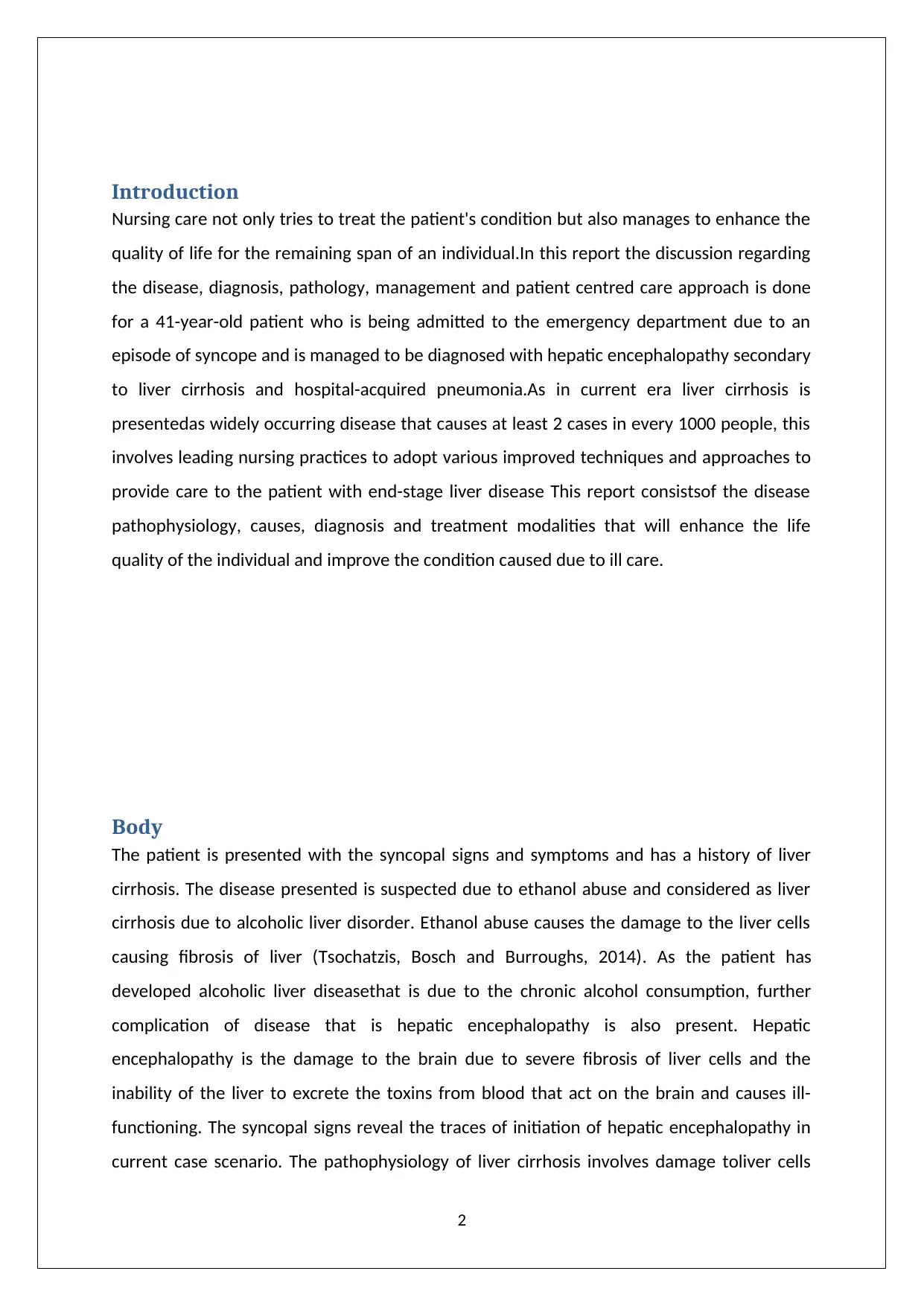This case study explores the comprehensive care of a 41-year-old patient admitted to the emergency department with syncope, subsequently diagnosed with hepatic encephalopathy secondary to liver cirrhosis and hospital-acquired pneumonia. The report delves into the pathophysiology, causes, diagnosis, and treatment modalities of liver cirrhosis and hepatic encephalopathy, emphasizing the importance of patient-centered care in managing this complex condition. The case highlights the challenges of providing care for a patient with end-stage liver disease, emphasizing the need for a multidisciplinary approach that includes medical management, psychosocial support, and ethical considerations. The report also discusses the role of nursing in preventing nosocomial infections and promoting patient safety.
![[object Object]](/_next/static/media/star-bottom.7253800d.svg)
![[object Object]](/_next/static/media/star-bottom.7253800d.svg)





